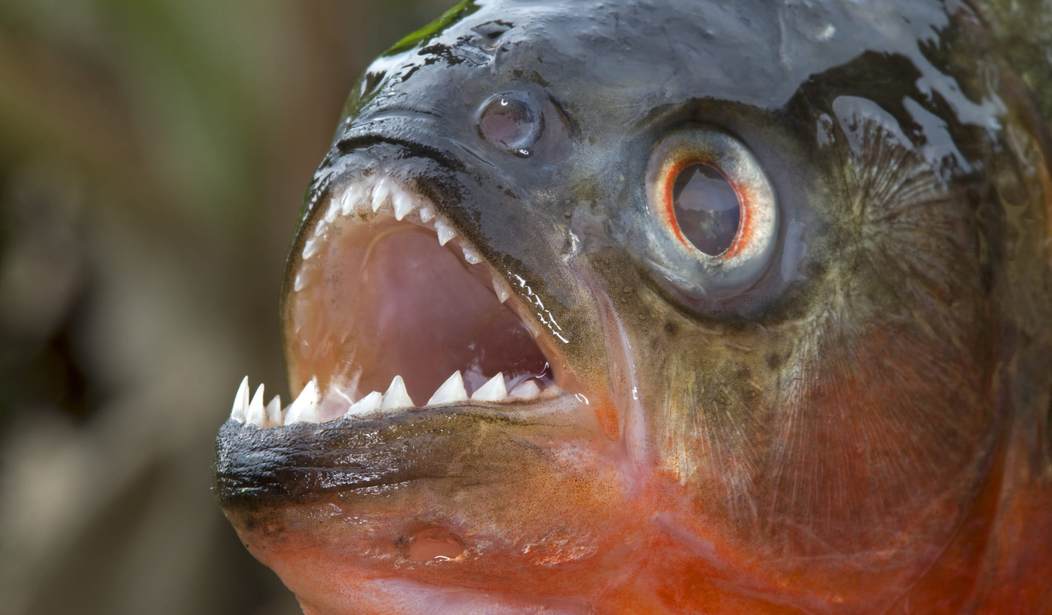You’ve likely heard the stories about how a bunch of Burmese pythons were released into the wetlands of south Florida, and that these massive snakes have been a massive burden on the local ecosystem ever since. But there are plenty of other invasive non-native animals that would be a major problem for the people and local wildlife of Florida if these non-native creatures established a breeding population in the wild. That’s exactly why the following three animals have been banned from entering the Sunshine State:
1. Electric Eel
These predatory fish can grow between six and eight feet long and use specialized cells to unleash short bursts of electricity that may carry up to 600 volts; that’s enough electrical power to knock a horse off of its hooves. Electric eels essentially act as a living Taser gun to zap their prey, while storing more than enough juice on the side to ward off potential predators.
People who have been struck by an electric eel’s power surge have described the pain as touching a hot stove or being hit with a stun gun, but human fatalities are rare. If careless aquarium enthusiasts started dumping these huge and potentially dangerous fish into local ponds and the eels started breeding, they’d likely be at the top of Florida’s food chain.
Florida’s alpha predators, such as alligators, black bears, and Florida panthers, are ill-equipped to hunt electric eels, which would allow these fish to easily establish themselves in the murkier freshwater areas of the state. These huge eels would compete for food against other aquatic predators, and they’d live as fearlessly in Florida as they do in South America. The short video above from National Geographic demonstrates how an electric eel fearlessly defends itself by lunging to press its chin onto its victim to deliver the most powerful shock possible:
2. Quagga & Zebra Mussels
These stripy shelled, half-inch-long freshwater mollusks originated in Russia and Ukraine, but these nasty little mussels have made their presence known throughout parts of the United States since 1989, when someone accidentally brought water contaminated with them to Minnesota.
The problem with quagga and zebra mussels isn’t so much a direct threat to humanity, but how they multiply like crazy. Female zebra mussels can lay up to 500,000 eggs in a year, and within two or three weeks, the tiny shelled larva latches onto a surface for the rest of its life. The seemingly infinite production line of new larva from each mature female zebra mussel leads to millions of new shellfish cementing themselves onto the undersides of boats, anchors, docks, buoys, and most importantly, public water supply plants.
If you live along the Great Lakes region, or freshwater waterways of Ohio, New York, Texas, Mississippi, Tennessee, and Arkansas, among a handful of other states, you may already be familiar with zebra mussels. People try to control local populations by applying pesticides and doing their best to keep boaters informed about these invasive invertebrates in an attempt to keep them from getting spread to cleaner waters.
Not only do zebra mussels wreak havoc on anything manmade in the water or near the shoreline, these localized population explosions have ruined the surrounding habitat for countless native animals. These mussels eat algae to survive, and if each female is producing up to half a million eggs each year, there will be many mollusks eating the local algae before long. If the mussels are consuming all of the algae, there won’t be enough for the native invertebrates and fish, which in turn causes large-scale food shortages and reduced numbers of indigenous species all around.
Thankfully zebra mussels haven’t taken hold in the state of Florida, and here’s hoping that the ban on importing the little monsters keeps it that way.
3. Piranha
Floridians prefer swimming in the Atlantic or the Gulf of Mexico because their freshwater ponds and rivers are already home to alligators and venomous snakes, and they really don’t need to add piranhas into the mix.
Piranhas are another infamous South American fish, and because thoughtless pet owners have already dumped their poor choice of a pet into local waters, people have discovered individual piranhas in Florida, Texas, and southern California over the years. Even though piranhas have been banned in about half of the U.S., the aggressive carnivores still remain popular fish among dedicated aquarium hobbyists. Those three states are especially concerned about a potential piranha population popping up in the future because these opportunistic meat-eaters thrive in warm freshwater areas.
We’re all aware of the scary reputation piranhas have, but even along the waters of the Amazon basin, piranha attacks on humans are fairly uncommon. While fatalities have happened before, particularly unlucky victims end up losing a finger, toe, or a circular chunk from one of their extremities.
It’s still crazy to think that just enough Burmese pythons were released into the Everglades to allow the dangerous snakes to establish themselves in the area, but as long as enough piranhas were unleashed into an area of the state that rarely gets cold weather, we could end up seeing an epidemic of nine-toed tourists returning from their Florida vacation.
Keep in mind that Floridians may apply for a license to own a menagerie of dangerous animals, including rhinoceroses, bears, crocodiles, jaguars, and orangutans, but the Florida Fish and Wildlife Conservation Commission is crystal clear when it comes to those nasty little biters. They explain that “no exceptions are made for piranha and pirambeba (a genus of piranhas); these two species are not allowed to be possessed by anyone at anytime.”









Join the conversation as a VIP Member